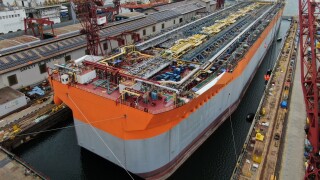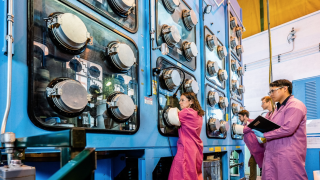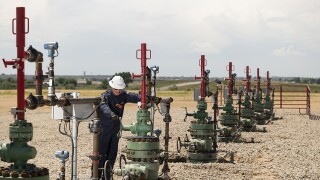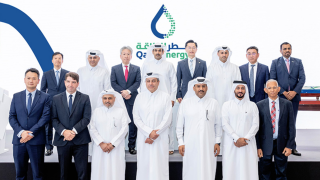
Trending Content on OGF
The contractor will install the flowline and related subsea equipment later this year for the Talos Energy-led development.
The supermajor expects its latest development will be online by 2027 and add 250,000 B/D to Guyana's soaring output.
Electric conversion of these offshore platforms is expected to cut about 1.2 million tonnes of CO₂ emissions per year.
-
The $6-billion Azeri Central East (ACE) platform is the first BP-operated offshore production facility controlled from onshore.
-
If optimized to scale, fast fission reactors could play a role in reducing emissions in field operations by producing carbon-free electricity.
-
The TWA Editorial Board is accepting nominations for “TWA Energy Influencers 2024: Young Professionals Who Energize Our Industry.” Nominate a YP by 1 June 2024.
-
The national oil company credits lean operating practices and AI for making the three-well, 45,000 B/D project economically viable.
-
Contractor will design FPSO hull and related topsides facilities for the project located in the Santos Basin offshore Brazil
-
The world's largest oilfield service company made the deal to expand its exposure to the less cyclical production segment of the upstream business.
-
Operator TotalEnergies wants to rework the EPC contract packages after initial bids challenged project economics.
-
The new vessels bring QatarEnergy’s fleet to 104 as the company ramps up production with its North Field expansion.
-
This article focuses on the use of an annular injection mixer in vaporizing heavy hydrocarbon fractions into natural gas streams and the evaluation of evaporation performance by computational fluid dynamics.
-
This paper describes a chemical-free process with a small footprint designed to capture exhaust from natural gas drive compressors and supporting gas-fueled production equipment.
-
The integration of new technologies and innovative approaches plays a pivotal role in driving sustainable advancements and value gains. These advancements are crucial for enhancing operational efficiency, reducing environmental impacts, and meeting the increasing global demand for natural gas as a key fuel powering the energy evolution.
-
This paper describes development of technology with the capability to combust flare gases with a heating value up to 50% lower than existing flare-tip technology.
Stay Connected
Don't miss out on the latest technology delivered to your email every 2 weeks. Sign up for the OGF newsletter.
Technical Papers for Facilities Professionals
This paper describes a full-field and near-wellbore poromechanics coupling scheme used to model productivity-index degradation against time.

































